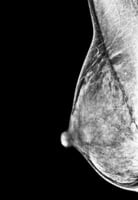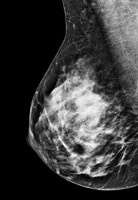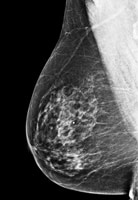The Cost of Breast Cancer Detection is Killing us, Not the Breast Density Notifications.
- Leona Towner
- Sep 10, 2024
- 4 min read
Updated: Feb 3
By: Leona Towner
The Food and Drug Administration’s updated mammogram reporting requirement to include breast density information on future test results has officially gone into effect September 10, 2024.
The new rule requires mammogram facilities to provide their patients with breast density information. Women (and men) with denser breast are then encouraged to get further testing outside of the mammogram to accurately rule out breast cancer.
“Since 1992, the FDA has worked to ensure patients have access to quality mammography. The impact of the Mammography Quality Standards Act on public health has been significant, including a steep decrease in the number of facilities that do not meet quality standards” said Hilary Marston, M.D., M.P.H., FDA’s Chief Medical Officer in a released statement.
By telling patients about their increased risk of having a cancerous nodule obstructed by their breast density view in a mammogram, the hope is that more patients will get the additional screenings to confirm or reject a diagnosis and find the cancer (if any) earlier.
Many states have laws already implemented that require their healthcare providers to notify women of their breast density in their mammogram results. This move by the FDA has just made those state sanctioned standards officially national.
THE BEST WAY TO PREVENT BREAST CANCER DEATHS
Early detection is by far the number one way to prevent breast cancer death by the majority of breast cancer corporation and non-profit standards.
These organizations all state and understand that detecting breast cancer at its earliest stage will lead to the highest chances of survival. The new FDA rule only addresses one of multiple steps breast cancer advocates hope will lead to fewer deaths.
Statistics show a large racial disparity between women diagnosed and women that die from breast cancer. In a 2020 NIH study it was found that the body mass index was a better breast density factor than race when comparing African American and non-Hispanic white woman alone. Summary: It is not black women that have denser breast it is bigger (also known as fat) women. With African American women leading breast cancer mortality in America, studies have shown it is largely due to being diagnosed at a later stage of the disease and not having the financial ability to get the best or any care. I read article after article about the triple negative breast cancer that state that the cause of higher rates in different demographics is unknown. Yet triple negative breast cancer has a very healthy record of being diagnosed in women under 40 years old, often.
Notifying individuals that their breasts are denser and encouraging them to seek more medical treatment only implicates the leading cause of breast cancer death, health care cost.
THE COST OF DETECTION
(Left to right types of breasts by density standards; very dense, dense, some density, fatty)
Images provided by the American College of Radiology
So how much are the recommended additional screenings that the new FDA rule will encourage patients with denser breasts to check out?
Medical cost in America may never be pinpointed due to the various state laws, aid programs, insurances and our capitalistic financial structure that encourages competition.
So the following list of cost is averaged from the BREM Foundation to Defeat Breast Cancer. I picked this list because it not only gave ranges but looked pretty similar to my individual google searches as I attempted to find a thorough resource.
Breast Exam Cost- FREE. Most clinics, healthcare practices, and internet resources can show and provide a breast exam, which is the simplest way to daily feel any changes in your breast tissue.
Mammogram Cost- Annually free through local resources and most insurers AFTER the recommended age. The Affordable Care act (section 2713, pg.13) also known as Obamacare, which is the closest to a nationally accredited health coverage plan, allows one free mammogram for women every two years starting at the recommended age of 40. It cost anywhere between $300-$600 without insurance. And breast care advocates are pushing to federally lower the recommended age to help cover the cost of mammograms earlier.
Diagnostic Mammogram Cost- $290
Breast Ultrasound Cost- Between $250 and $500
MRI (Breast magnetic resonance imaging) Cost- $1,050
For a woman that goes through at least three test to certify and locate breast cancer in its initial stages it can cost on average around $1,000. That does not include the time to schedule and make back-to-back doctor’s appointments, the transportation cost, or the loss of income if the individual has to take off work and does not have paid time off.
The 2024 State of Black America report highlights the continual disparity that shows how African Americans continue to suffer from low paying jobs that result in limited income to spread out between, housing, nutrition, education, and overall wealth. Jobs being the source of most people’s health care coverage outside of the national ACA opt in, which if you don’t understand by now will not cover the introductory mammogram cost of breast care detection for most American women diagnosed with breast cancer under the age of 40.
So here we are. Grateful for a step towards national regulation to notify women (and men) that have denser breast to get further testing. We still (as a nation) can’t afford the regular testing. We still don’t have answers to why some demographics have higher rates of specific forms because that requires research funding. BUT we are still determined and hopeful that the questions are here, so that must mean the answers are on their way.
That is why we love tomorrows (GloRilla reference).
FUTURE EFFORTS
Breast Cancer advocates are additionally working toward:
-Early detection healthcare screenings being fully covered by insurers
-Screenings are done and covered at an earlier age –New recommendation age 25
-More funding for breast cancer research (clinics, trials, studies, drugs ect)


























Comments